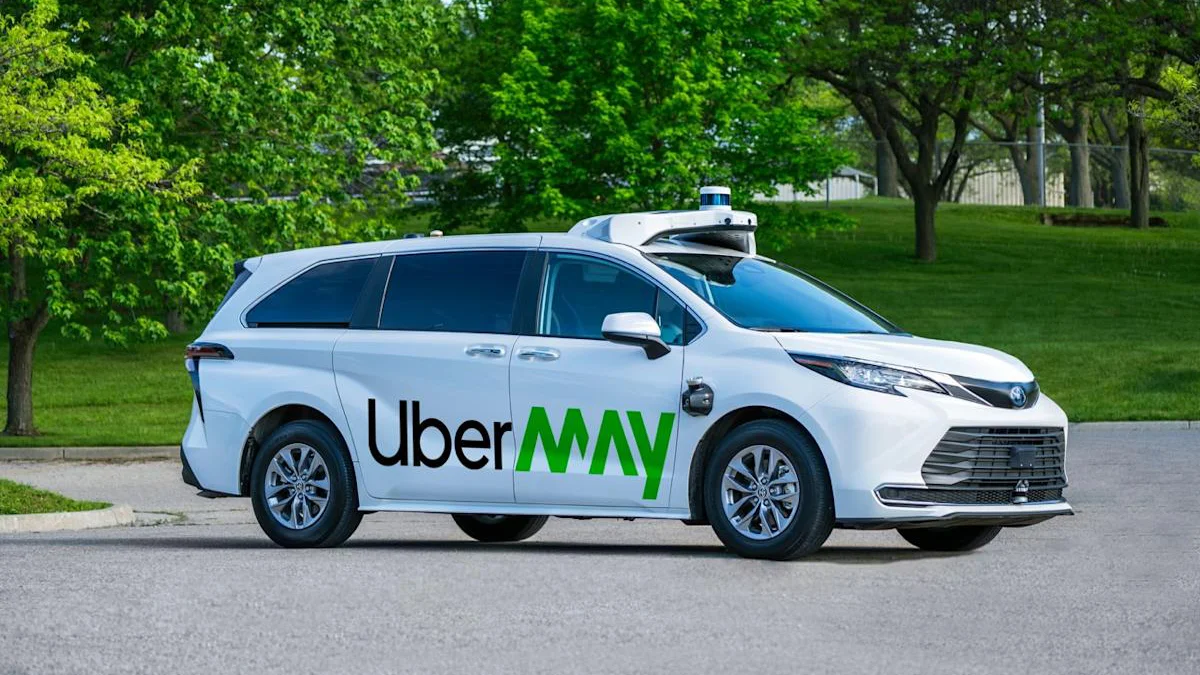Necessary Always Active
Necessary cookies are required to enable the basic features of this site, such as providing secure log-in or adjusting your consent preferences. These cookies do not store any personally identifiable data.
|
||||||
|
||||||
|
||||||
|

Uber Technologies has partnered with self-driving startup May Mobility to deploy autonomous vehicles on its ride-hailing platform by late 2025. According to Reuters, the initiative will begin with a safety driver phase before transitioning to fully autonomous operations. Through this partnership, Uber seeks to build its position in the developing robotaxi sector that also includes competitors such as Lyft and Tesla.
May Mobility, based in Ann Arbor, Michigan, has been operating in Arlington, Texas, since 2021. The company plans to use hybrid-electric Toyota Sienna minivans equipped with its self-driving technology for this service.
The driverless commercial service from May Mobility began operating in Peachtree Corners, Georgia, which forms part of the Atlanta metropolitan area. The company has operated a free autonomous shuttle along a 4-mile stretch of Technology Parkway since September 2024. Human safety operators used to maintain their presence at the beginning but were removed this week to establish fully automatic operations. “We’re proud to bring true driverless operations to a real-world setting,” said Brian Johnson, city manager of Peachtree Corners.
Uber’s collaboration with May Mobility adds to its growing number of self-driving taxi partnerships. Last year, Uber partnered with several self-driving technology companies to expand its autonomous vehicle operations. Among these was a strategic collaboration with Guangzhou-based WeRide. The deal included adding WeRide’s autonomous vehicles to Uber’s ride-hailing platform and launching Uber robotaxis in the UAE.
The company has also begun offering Waymo robotaxis on its app in Phoenix and Austin and plans to launch in Atlanta this summer. The strategic move by Uber creates direct market competition with Lyft since both companies have announced autonomous ride-hailing services for Atlanta in 2021.
May Mobility has secured financial backing of more than $380 million from Toyota and BMW, together with other investors. The company operates in various U.S. cities, including Ann Arbor (Michigan), Grand Rapids (Minnesota), Peachtree Corners (Georgia), Miami (Florida), and Sun City (Arizona). The partnership strategy built on close collaboration with local governments, along with businesses has driven the expansion plans of the company.
The partnership between Uber and May Mobility is set to scale beyond Arlington. After the initial launch, the companies intend to expand to other U.S. markets in 2026. They plan to deploy thousands of autonomous vehicles over the next few years. May Mobility’s CEO Edwin Olson stressed his company’s dedication to safety standards while developing innovative transportation technologies.
May Mobility runs its fleet through hybrid Toyota Sienna Autono-MaaS vehicles that get self-driving technology. The vehicles will begin their operation with human safety operators as safety measures until they gain full autonomous capabilities.
Similar to other robotaxi system providers, which target singular vehicle operations, the company adopts a calculated method towards market launch. The startup focuses initially on low-speed and low-risk environments such as campuses and business parks to provide shuttle services with shared transportation.
May uses this slow deployment method to test and develop its robotaxi technology that will eventually be implemented on Uber and Lyft platforms.
Industry partnerships between Uber and May Mobility will play a crucial role in shaping the future of the emerging autonomous vehicle sector. These business partnerships intend to introduce autonomous ride-hailing services to thousands of U.S. cities through their deployment of robotaxis.